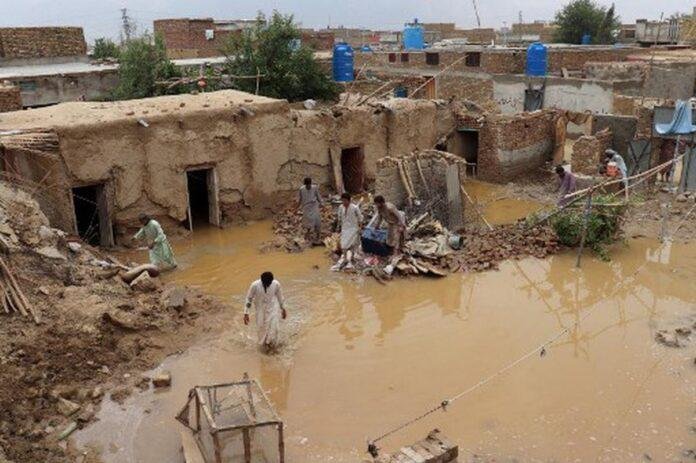The provinces of southern Pakistan are preparing for further flooding, with a third of the country still flooded by record monsoon rains. More than 1,200 people – including 399 children – have died, and 33 million people have been affected, in what has been referred to as the worst rain-related catastrophe in a decade.
“We’re on high alert as water arriving downstream from northern flooding is expected to enter the province over the next few days,” Sindh provincial government spokesperson Murtaza Wahab told news agency Reuters. Wahab said the Indus River is predicted to swell at a rate of about 600,000 cubic feet per second, putting existing flood defences to a test.
The United Nations has described the situation in Pakistan as an “unprecedented climate disaster” and has called for $160 million in aid to the devastated country.
Pakistan has declared a nationwide emergency following the floods.
The disaster also resulted in economic problems as inflation hit a new record this month – the highest in 47 years. Consumer prices increased 27.26% last month compared to the year before, according to data released by the government on Thursday.
The flood has affected more than four million people in Pakistan and threw life out of the equipment. And it has also affected standing crops, and as the waters recede, fears of disease, as well as food shortages, are expected to rise. In addition, the worry that the devastating floods have been caused due to climate change is a worry for all of South Asia, one of the world’s regions most vulnerable to global warming
The World Food Programme said earlier that it aims to reach as many as one million people in the coming months with food, nutrition, and subsistence aid.
The World Health Organisation (WHO) has said that more than 6.4 million people are in desperate need of humanitarian assistance.
The country began to receive assistance from China, Turkey, and the United Arab Emirates, but Prime Minister Shehbaz Sharif ruled out the possibility of accepting Indian aid.
Prime Minister Narendra Modi’s message, in a tweet on Monday evening, expressing condolences to the victims of the flooding in Pakistan, is a welcome gesture, especially after weeks of silence over what has been one of the worst natural disasters in the neighborhood in recent times.

Given that the crisis will only deepen at this point, Pakistan Finance Minister Miftah Ismail also said on Monday that he may propose lifting the trade ban imposed on India after the Jammu-Kashmir reorganization in 2019, so as to import Indian vegetables and essential commodities. So far, Islamabad has only made exceptions for pharmaceutical imports from India during the COVID-19 pandemic and for Indian humanitarian assistance to Afghanistan.
Despite the poor state of India-Pakistan ties, both New Delhi and Islamabad must put aside their domestic considerations, and seize the moment to help those stranded in the flooding as best they can.
It would be churlish and short-sighted of Pakistan to reject an opportunity to lift the trade ban with India that has only hurt its own interests, and to give up a source of affordable supplies at a time of such calamity. And it would be both tragic and ridiculous if the enmity between the two countries would not allow them to work together at a time such as this, even as their governments allow their cricket teams to play each other for financial considerations.
Significantly Prime Minister Narendra Modi and Pakistani Prime Minister Shehbaz Sharif are scheduled to visit Uzbekistan in September for the SCO summit. While a more lasting dialogue, which has been suspended between the two countries for nearly a decade over the terrorism issue, is unlikely, the leaders must find the time to discuss ways to mitigate the catastrophes at hand.




